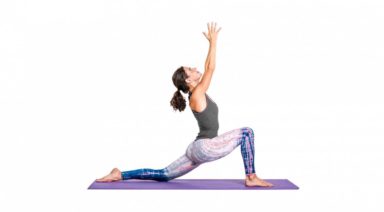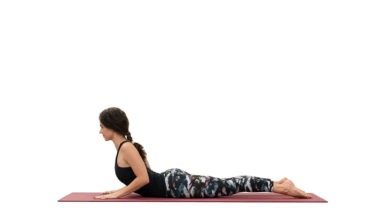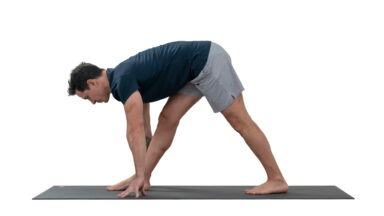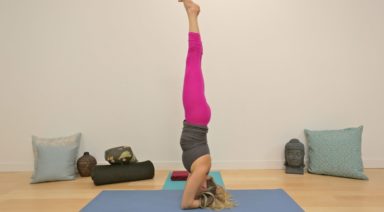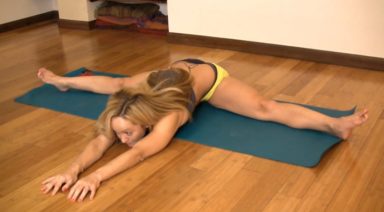Enhancing your Yoga Practice with Journaling

The art and practice of yoga promise many benefits to the practitioner, and the fruits of time spent on the mat are varied and innumerable. We experience these benefits in different degrees based on our dedication and commitment. Each of us has a gateway reason that initially brings us to the mat; typically, it’s something very broad like becoming more flexible or relieving stress. Inevitably over time, those reasons change, and the “get” from the practice becomes subtler, like raising consciousness or living more compassionately. No matter where you find yourself on the spectrum, there are tools that help to enhance the experience of Yoga, so the nectar of the practice is sweeter and more potent. Some of these tools require a hefty investment of time or resource and are therefore inaccessible to everyone, but other tools like the one we are talking about here are accessible to all. Journaling is a beautiful way to supplement and enhance your yoga practice—all you need is a pen, paper, and a few minutes of your day.
Why Journal?
Journaling is a simple sacred act that calls us to a place of exploration, curiosity, and revelation. You don’t have to be a professional writer to be a personal journalist. Writing helps to process and exfoliate the lives we lead and our thoughts about them. Journaling helps to strengthen the path for a deeper relationship with Self. This intimate art clears mental clutter and leaves a sense of spaciousness in its wake. It is detoxifying for the mind and cathartic for the heart. Journaling, unlike a lot of self-growth modalities, is relatively easy and doesn’t require a financial output. It necessitates no training, no physical capabilities, and there are no grades or performance criteria. It is one of the most open and forgiving therapeutic avenues available to us. The question should rather be: Why not journal? The benefits are limitless, and the outlay is small in comparison.
The Yoga/Journaling Connection
Yoga is so much more than movement; Yoga is the science of and relationship to the Self. The modern yogi doesn’t typically have time to devote all waking hours to the theory and practice of Yoga. We are blessed with such multifaceted lives that we tend to harbor boatloads of gunk that fog our ability to see and experience reality from a place of pure conscience. Because our human experience is so complex, having supplemental tools to support the yogic process is vital. Journaling is a beautiful and very personal way to expand upon our time on the mat. A yoga practice is full of “ah-ha” moments, and often, those precious nuggets of wisdom get lost because we roll up our mats and walk away without engaging with follow-up practices that give space to explore and provide roots for revelations.
Journaling 101
If you are new to journaling, the best way to get acquainted with the practice is by embarking on a daily stream of consciousness writing journey. This means that you sit down for five to fifteen minutes (or more!) and just write down what is flowing through your mind at that very moment. Don’t worry about punctuation, grammar, or making sense of anything; simply allow your thoughts to pour naturally through your hand to the paper. Don’t judge or choreograph the process; just write.

Writer’s Block
If you are finding that you sit down to journal, and nothing comes out simply be with the “nothingness.” Use it as an opportunity to meditate on the blockage. If you push past this place without recognizing it’s importance than you risk forfeiting some of the fertilizer that goes into the soil where you will eventually hope to grow. Everything exists for a reason, and we must honor what arises even if it feels unwelcome.
Journaling Prompts
After making space for the block as mentioned above, you can give yourself some prompts to help lubricate the flow of energy to the blank page. Here are some examples:
- What did I learn from my practice today?
- How did the theme of the practice speak to my life or how can I apply the theme of the practice to my life?
- What in my life can I be grateful for?
- What habits (small or large) aren’t supporting my highest Self?
- What am I needing or wanting to cultivate more of in my life?
- Where is there pain in my body, mind, or heart that needs to be explored and expressed?
- Where is there misalignment in my ways in the world?
- What doesn’t fit with the current vision I have for my life?
- What has been left unsaid or untouched that yearns for my attention?
- Where do I need more boundaries in my life? Where do I need to say “no” more?
- Where do I need more freedom in my life? Where do I need to say “yes” more?
- Where and how do I feel stuck?
- What inspires me in the present moment?
Yoga Journaling
Once you are comfortable with this form of expressive arts, then you can start to give the practice a firmer container, such as sitting down to write and process what unfolded for you while you were on the mat that day. You can explore anything that was challenging, anything that prevented you from being fully present on the mat, anything that you learned, etc. For example, you could’ve been strongly triggered by something the teacher said, which happens a lot! If you walk away from the class and allow the focus to be on the teacher, it was his/her fault for saying whatever it was that pushed your buttons; then, you hold no ownership of your reaction to it. It would be valuable to use your journaling practice as a place to hold space for reflections about why this something or someone bothered you, and therefore you give yourself the opportunity to get to the root of the cause. When you get to the root of the cause, true healing, and transformation take place. But if you aren’t careful or if you don’t have other practices to assist this process, you could miss the chance to evolve entirely. And if we aren’t growing and evolving we are withering and wilting. Yoga is the yoking of all things, including people. What we learn on our mats we take into our lives, so you can start to apply this beyond the yoga to other relationships or situations off the mat.
Commit to 30 Days
As with all practices, it is important to keep going. Sometimes, more often than not, we abandon new things if we don’t see instant gratification of their benefits. I always suggest giving something at least thirty days before surmising anything about its possible impact. Time is a crucial ingredient to change, and almost nothing happens overnight. The same is true with journaling. In my experience, journaling becomes more gratifying the longer I do it. Give yourself permission to commit past any resistance and if it doesn’t stick now to be willing to consider it at a different time in your life down the road.
Five Steps to Starting a Journaling Practice
- Get a journal! It could be something as simple as a spiral-bound notebook or something fancy like a leather-bound notebook.
- Set aside time to journal every day or each time you practice yoga. Try to be consistent; all practices are more powerful when they are ritualized.
- Write freely about anything that moves you or if you need some help to initiate the flow give yourself a prompt.
- Keep your journal with you when you practice so that even if you don’t have time to sit down and write immediately afterward, you can jot down some small notes as reminders for when you are able to return.
- Be free of expectations and have fun!
Journaling and yoga are a perfect marriage. Writing helps to extract more from your time on the mat. It’s valuable to pack in the potency because time is precious and nothing beyond this moment is guaranteed. Happy writing my dear friends, may this practice bring your closer to the heart of your yoga.
5 Ways to Overcome a Yoga Rut

Do you have to struggle to get yourself on your mat these days? Has your yoga practice become a chore? Do you find yourself thinking about dinner, the latest movie you want to catch, or just about anything else but yoga during your yoga practice? Are you demotivated, frustrated or plain bored of doing yoga? If you answered “yes” to any of these, it is highly likely that you are stuck in a yoga rut.
Okay, so that’s the bad news. The good news is that it is totally possible to lift yourself out of this slump–I know this as I have personally been there. I succeeded in re-energizing my practice and so can you. Here are my suggestions for getting through this challenging time.
How to Overcome Your Yoga Rut
1. Pause and reflect.
The first and foremost step is to go within and get in touch with your feelings without being judgmental. What are you experiencing? Is it fatigue, boredom, frustration, depression, anger, annoyance, hopelessness or a combination? Next, ask yourself why you could be feeling this way, and listen to whatever comes up. The answer could be revealing and could instantly give you the insight you need.
2. Take a short break.
If you are feeling drained, are lacking in energy or feel physically exhausted, it is possible that you are going through a stressful time in other areas of your life. You might also be driving yourself too hard in your yoga practice without taking an occasional break. If so, the answer lies in acknowledging and honoring your need for some time out.
Our bodies need rest to rejuvenate and thrive, so give yourself permission to press the pause button on your practice while you indulge in other self-care rituals–like massage. You will know when you are ready to resume your practice because you will feel a sense of renewal when you hit the mat again.
3. Try something different in your practice.
We are humans and human beings get bored. It’s a fact of life. If you are feeling bored with your yoga routine and find yourself simply going through the motions, you have probably outgrown your present practice. You need to add more stimulation and challenge to your routine–this will keep your mind engaged and interested as there will be something new to observe, experience and master. Trying a new asana, a new variation of your favorite asana, or altering the pace of your practice by experimenting with a dynamic flow versus static holds could reengage you.
Something that always works for me is to focus my attention on an unexplored dimension during a posture. This could be with a physical aspect (for instance, taking my attention to the way my hips and knees are feeling during cobra pose rather than focusing only on the bend in the back), or it could be through an observation of the pattern of my breath and the emotions, feelings and thoughts that arise during the posture. Try it yourself.
4. Learn or study a new aspect of yoga.
Yoga teachings have multiple dimensions and are richly layered. I find that studying an unexplored realm, such as functional anatomy; yogic anatomy and physiology; or yoga philosophy, provides me with a fresh perspective on yoga. Subsequently, applying this new information takes my practice to a new high. For instance, reading about the Yamas and Niyamas and reflecting on their application made a huge difference in the way I approached my asana practice.
Delving into the anatomy of individual postures keeps me motivated to scientifically examine myself whenever I am on the mat–this process also provides valuable insight into necessary alignment corrections, and creates an awareness of specific muscle groups that need to be worked on.
5. Stop striving for perfection.
If you are feeling annoyed frustrated, hopeless or depressed, it is very likely that you are trying too hard to attain the final posture. Perhaps you saw a relative newbie execute a flawless Pigeon pose at a yoga class recently and felt defeated since your Pigeon is nowhere close. If this strikes a chord, it is a good time to remind yourself what yoga is all about.
Yoga is a journey of self-discovery and transformation. The asanas are just a means to this end. To reap the benefits of yoga, it is not essential that you achieve a perfect posture. As in any other journey, it is rewarding to enjoy the ride and have fun along the way. So lighten up, accept your present levels of flexibility and strength and aim to enjoy your practice. This attitude shift may be all that you need to reconnect with yoga.
I hope these tips help navigate you through the temporary turbulence you are experiencing along your path. Remember, clear and bright skies are just around the bend.









